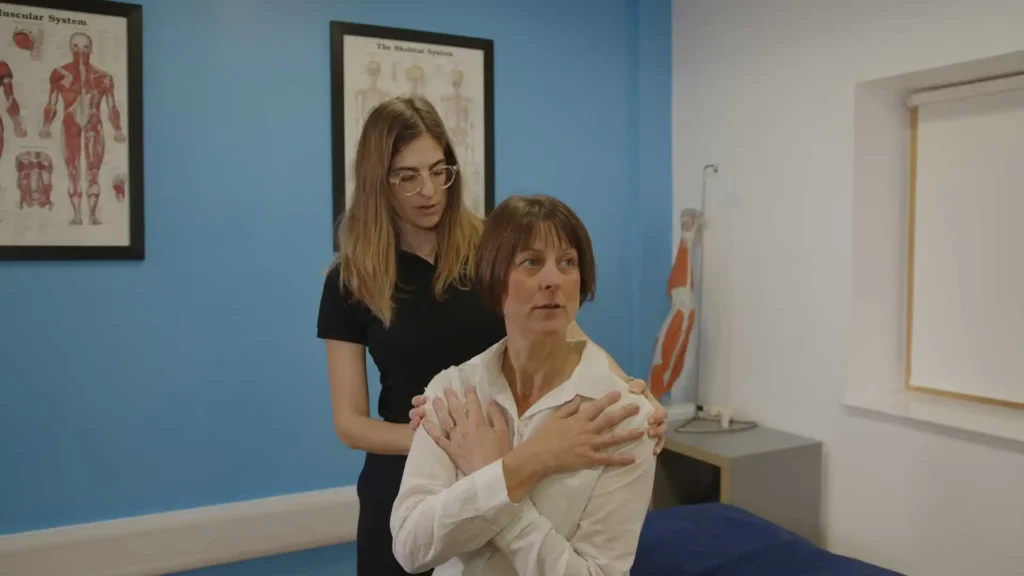Frozen shoulder, also called adhesive capsulitis, is a condition in which you experience pain and stiffness in your shoulder. The symptoms appear slowly, worsen gradually and usually between 12 – 24 months to resolve.

The shoulder joint is comprised of bones, tendons, and ligaments that are encased in a capsule of connective tissue. Gradual thickening and tightening of this capsule surrounding the shoulder joint restrict shoulder movement causing a frozen shoulder. It is unclear why this happens, but it is sometimes associated with diabetes or a long period of immobilisation following an arm fracture or shoulder surgery. Women and those over the age of 40 have a higher risk of developing a frozen shoulder.
Frozen shoulder is diagnosed following examination to look at your pattern of pain and the limited amount of movement in the shoulder. In a frozen shoulder, both the active and passive mobility are reduced, though strength may remain quite good. Sometimes a scan is recommended to look at the possible other diagnoses that can cause pain and limited movement in the shoulder.
The signs and symptoms of frozen shoulder develop gradually in three stages with each stage lasting for several months.
When things are not improving appropriately, or when pain is significant, it is sometimes recommended that people might consider having an injection into the shoulder to help improve the movement and reduce the pain. Very occasionally, surgery may be recommended to remove any build up of scar tissue in the joint.
Pain in the shoulder may suggest an injury, which is more common in athletes participating in sports such as swimming, tennis, pitching, and weightlifting. The injuries are caused due to the over usage or repetitive motion of the arms.
In addition to pain, shoulder injuries also cause stiffness, restricted movements, difficulty in performing routine activities and popping sensation.

A fracture is a break in the bone that commonly occurs because of injuries, such as a fall or a direct blow to the shoulder.
Early treatment is necessary to prevent serious shoulder injuries. The immediate mode of treatment recommended for shoulder injuries is rest, ice, compression and elevation (RICE). Your doctor may also prescribe anti-inflammatory medications to help reduce the swelling and pain.
Your doctor may recommend certain exercises to prevent stiffness and improve range of motion and strength. Passive manipulation and massage therapy to improve blood circulation and healing are also administered. Other techniques such as acupuncture, TENS, and ultrasound therapy may additionally be recommended.